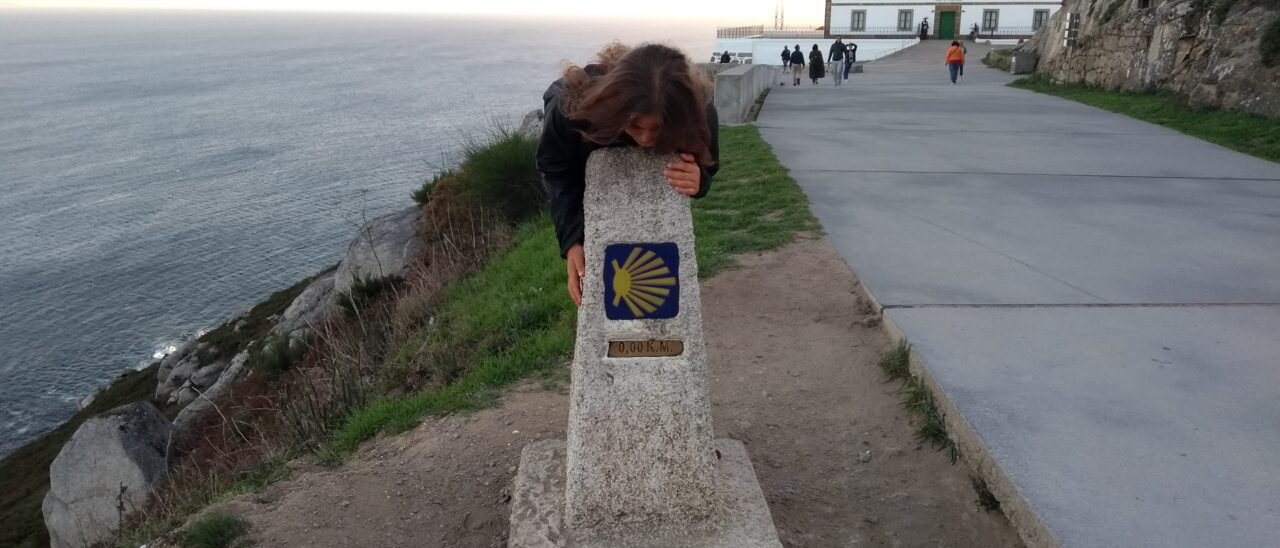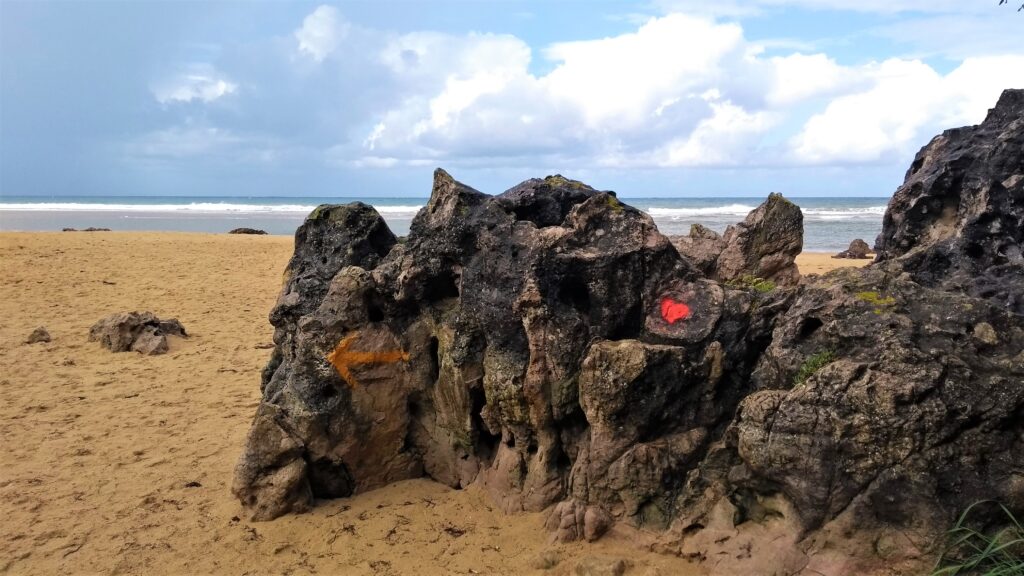In September 2017 I grabbed my backpack and headed to the Spanish town of Irún to hike the Camino del Norte in its full length. The decision for the coastal path didn’t take long: It promised stunning views of the Atlantic Ocean, smaller and larger coastal towns and less crowds than on the Camino Francés. Additionally, the Northern Way is frequently described as one of the most challenging Caminos, which made me curious, too.
Quick & dirty: The Camino del Norte aka The Northern Way
| Length: | 835.7 km / 513 mi |
| Country: | Spain |
| Start: | Irún |
| Finish: | Santiago de Compostela |
| Seasons: | April – September |
The first half of the Spanish coastal route is wonderfully rough and culturally very diverse. Starting in the Basque Country, the trail leads through Cantabria, Asturias and Galicia: Sometimes right along the steep coastline, other times through rural areas and over gravel roads, through charming villages and bustling coastal towns like San Sebastian, Bilbao and Santander. In every town you will find a place to stop for a bite to eat, a cold cerveca or tinto de verano and both public and private refuges.
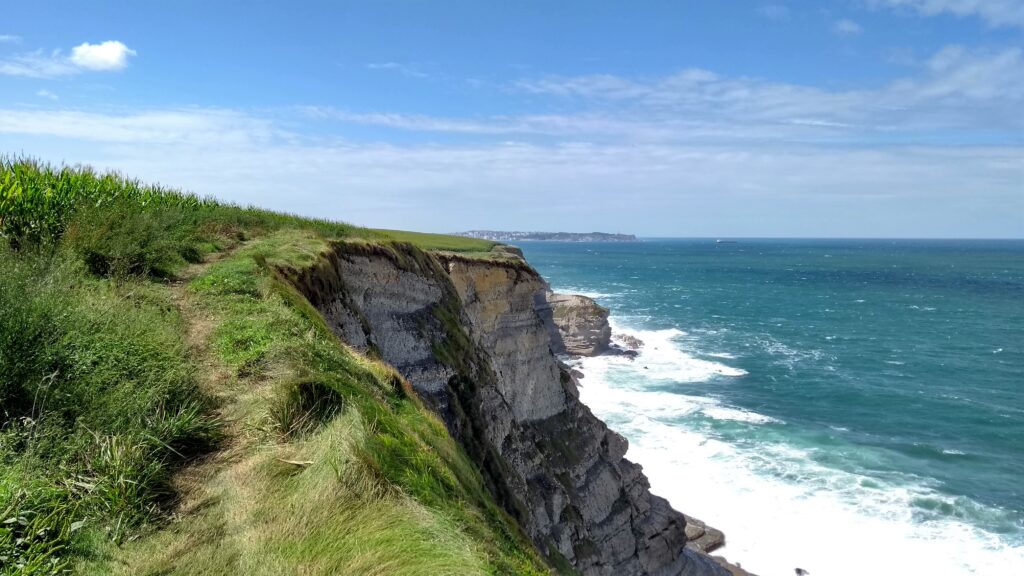
Contrary to many reports about the particular difficulty of the trail, I found the stages easy to master. If necessary, they are easily adjustable in length according to fitness or personal preference. For normally fit people, the greatest challenge is probably not to tumble off a cliff while enjoying the sweet views over the Atlantic Ocean.
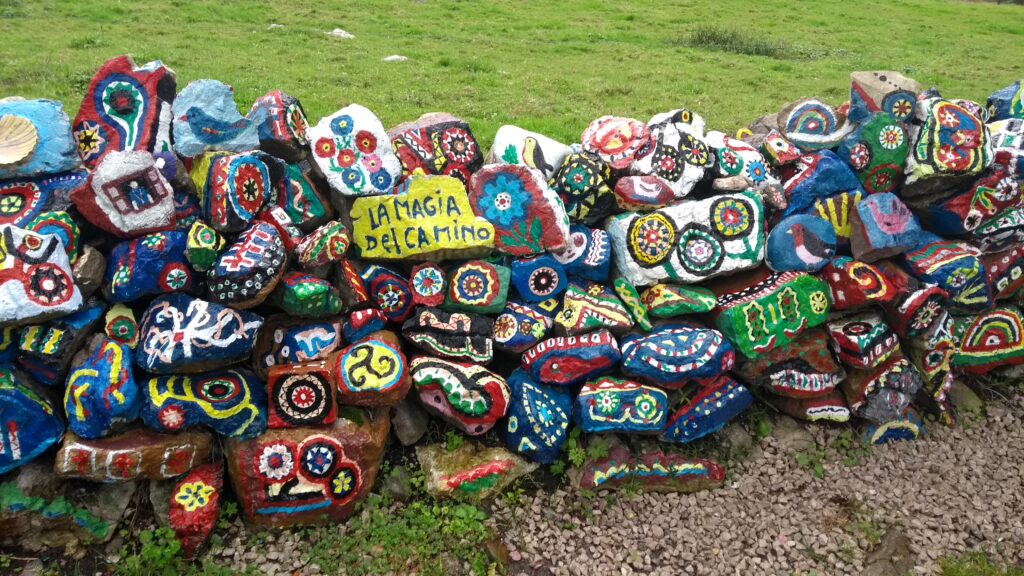
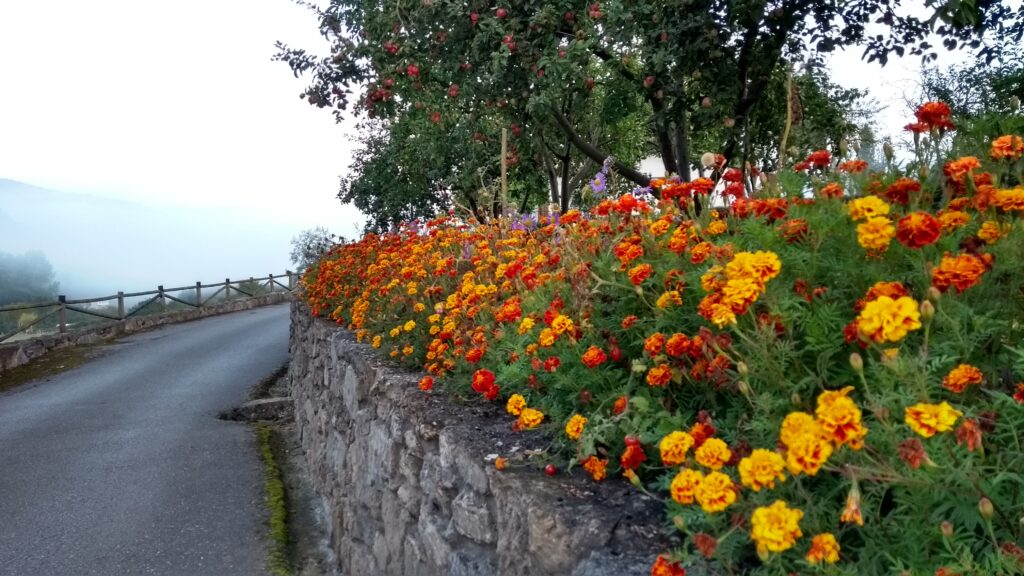
Change of plans
Switching Caminos after 457 kilometres wasn’t exactly part of my plan and mainly thanks to two fellow hikers from the US. The gals and I met early into our hike and somehow stuck together from then on. The trail brings you together – as do hours of chatting about culture, politics, podcasts and numerous deep philosophical rounds of ‘Would you rather’. After two weeks on the Camino del Norte, I spontaneously joined their plan and, together with a bunch of fantastic people, continued on the Camino Primitivo towards Santiago.
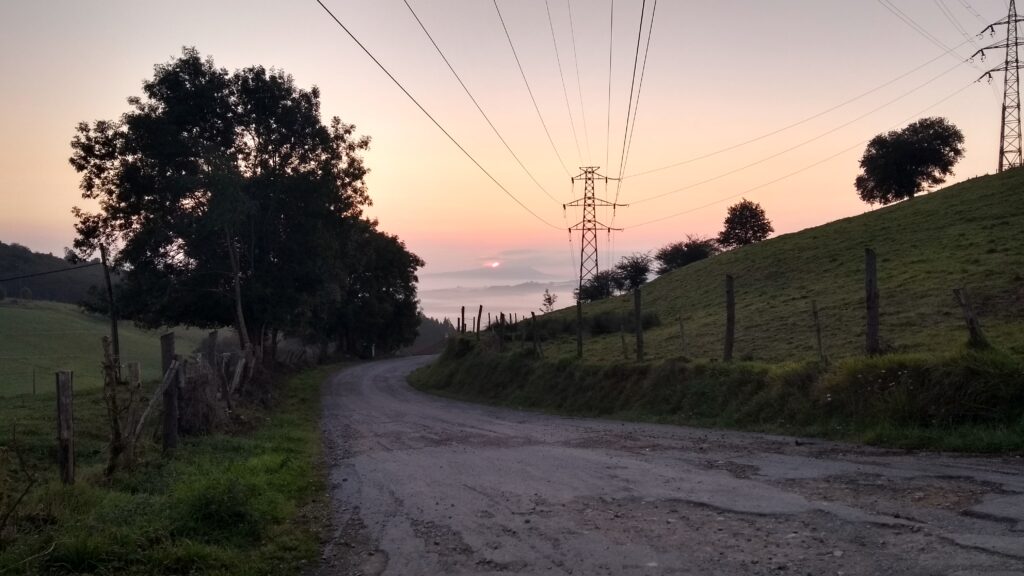
From the coast into the mountains
In Casquita there is the option of either continuing straight towards Gijón on the Camino del Norte or taking a 40 km (25 mi) long side trail to Oviedo, the official starting point of the Camino Primitivo. A waymarker clearly indicates where the road branches off to the left to Oviedo. Like the rest of the Spanish Caminos, the connection trail is very well marked.
Quick & dirty: The Camino Primitivo
| Length: | 321 km / 200 mi |
| Country: | Spain |
| Start: | Oviedo |
| Finish: | Santiago de Compostela |
| Season: | May – September |
The Camino Primitivo is considered to be the oldest and original Way of St. James. From Oviedo, the capital of Asturias, it leads over several passes – with spectacular views over the mountain ranges of the Picos de Europa National Park – all the way to Santiago de Compostela in Galicia.
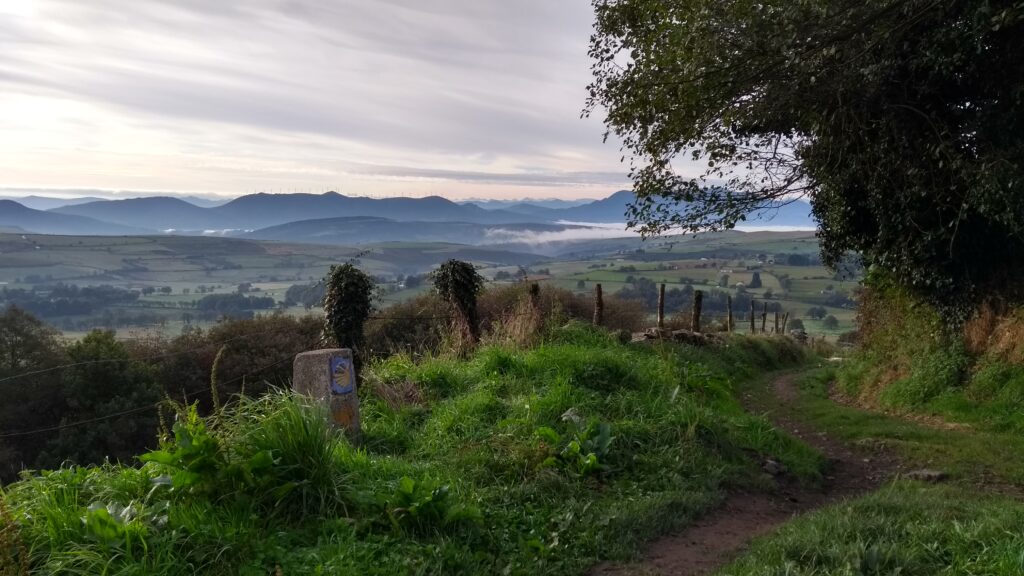
Compared to the first stretch of the Northern Way, the Camino Primitivo was much more peaceful, unspoilt and, with an elevation difference of almost 10,000 m, a little more physically demanding. For me, the remoteness of the trail and the mountainous landscape were a welcome change of scenery – especially with our small international trail family, which always came together at the end of the daily section. Even though I loved being near to the sea on the Camino del Norte, the walk in and out of larger towns could be strenuous and often included long road walks on asphalt ground. The Primitivo passed fewer and smaller towns and stayed mostly on dirt paths, which made walking much more enjoyable. The refuges were surprisingly modern and with just 5 Euro per night more than affordable.
Since I didn’t plan to hike the Camino Primitivo, I didn’t bring any guide book or paper maps. In Oviedo, I downloaded the app Buen Camino, which came in super handy for orientation on the trail and planning the daily stages. I’d recommend to check out the app if you’re keen to hike any of the Caminos!
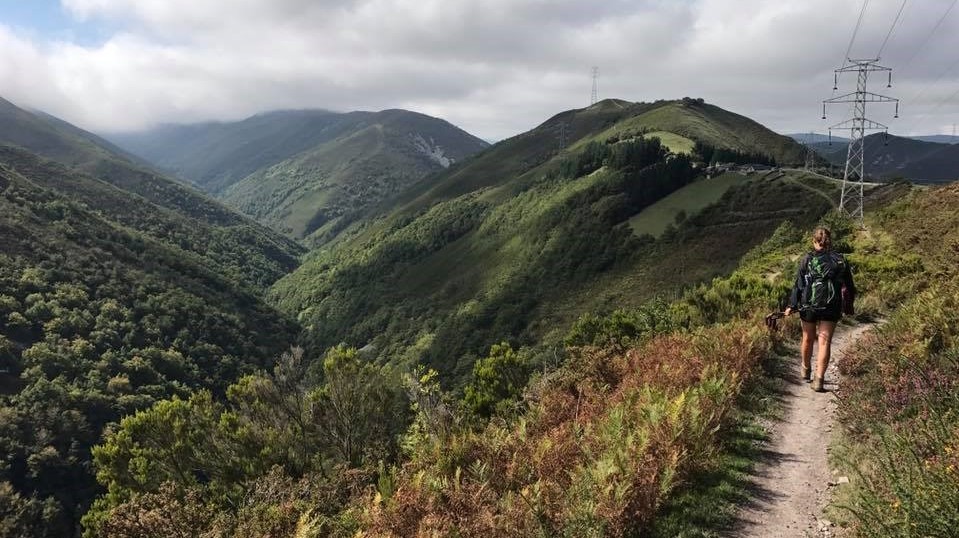
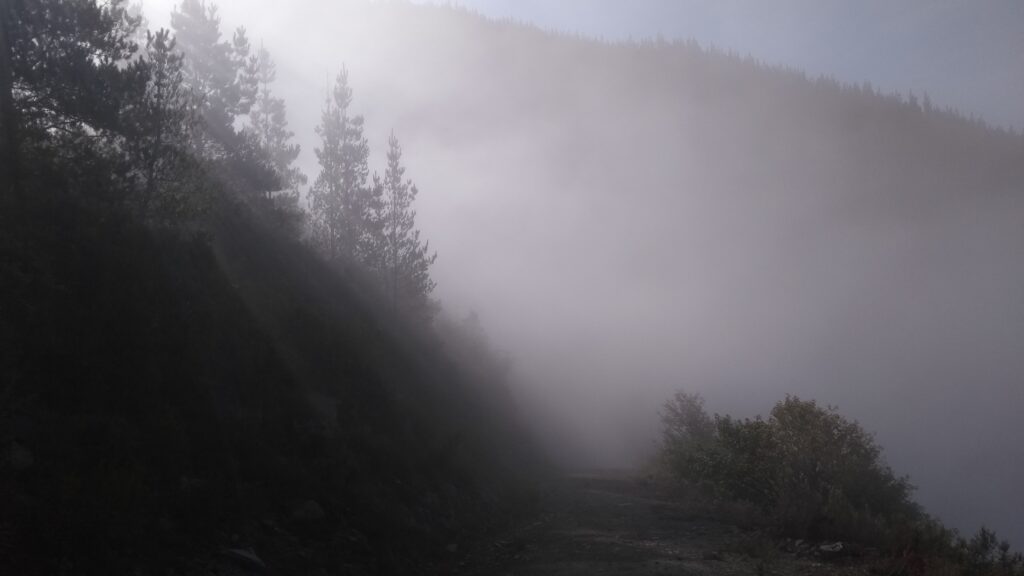
The last stages of the Camino Primitivo merge with the final section of the Camino Francés. After the remoteness of the mountains, the huge number of pilgrims and chanting youth groups that dominate the last 100 km of the trail were slightly overwhelming. We did our best to avoid the crowd and just sped up til Santiago.
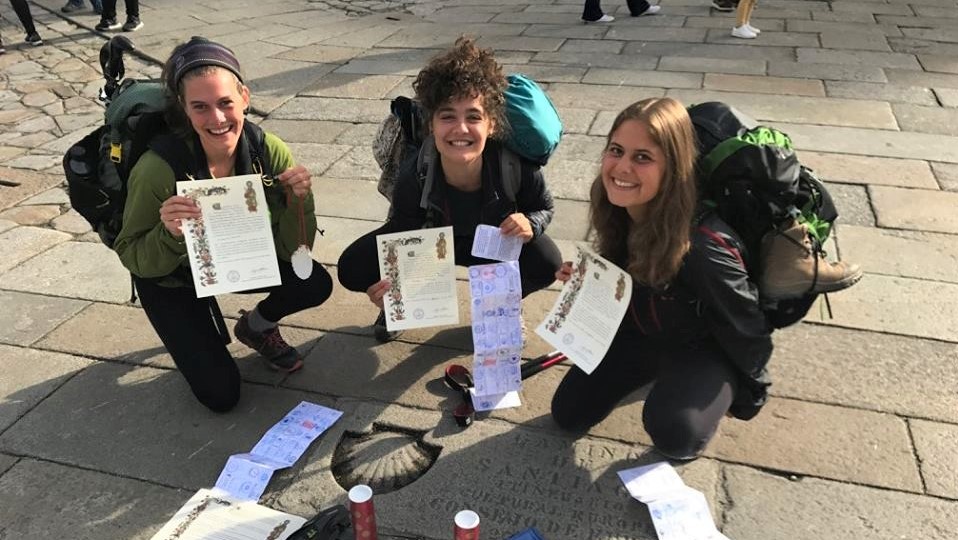
KIMBER! CLAIRE! BABY MOCKINGBIRD! SANTIAGO, FINALLY!
From Santiago to Finisterre
Finisterre – mistakenly believed to be the westernmost point of Europe in Roman times and therefore still known as “the end of the world” s a lovely extension to the Camino de Santiago (Spoiler: The westernmost point of the Iberian Peninsula is actually Cabo da Roca in Portugal). Because I still had some time before my trip home, I spontaneously decided to hike the extra 90 km from Santiago to Finisterre, so I could officially tap the 0,00 km marker of the Camino. In Finisterre you also get a certificate, which – psst – is much prettier than the one from the pilgrim’s office in Santiago. At the end of my hike, the sunset over the Atlantic was particularly gorgeous and I may or may not have shed a tear or two – I had started and ended my hike on the Atlantic Ocean (and I freaking missed my newly made friends).
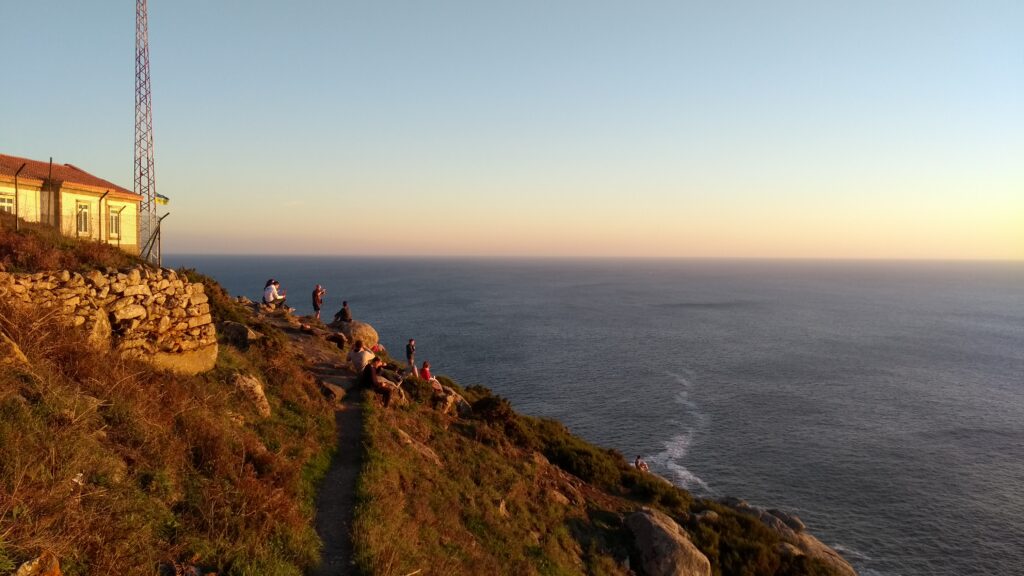
For anyone who is looking for a more unconventional way to stroll through Spain, I can only encourage you to consider a combination of both, the Northern Way and the Camino Primitivo. There are many routes that lead to Finisterre. So why not take a route off the popular Camino Francés to the end of the world?

